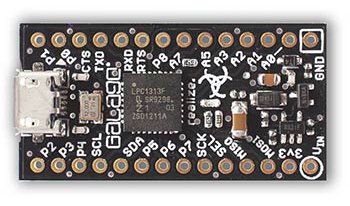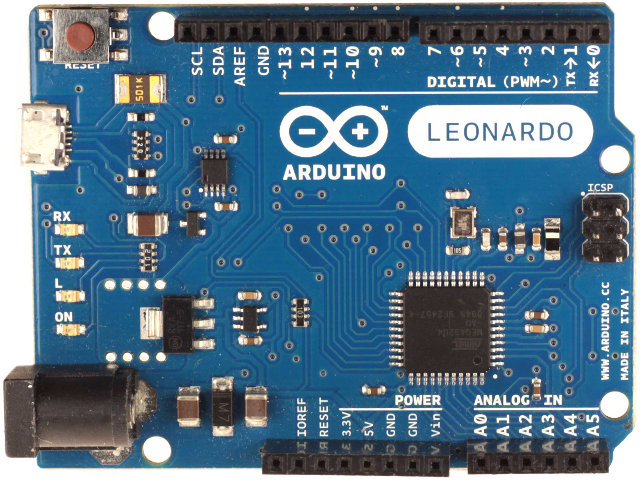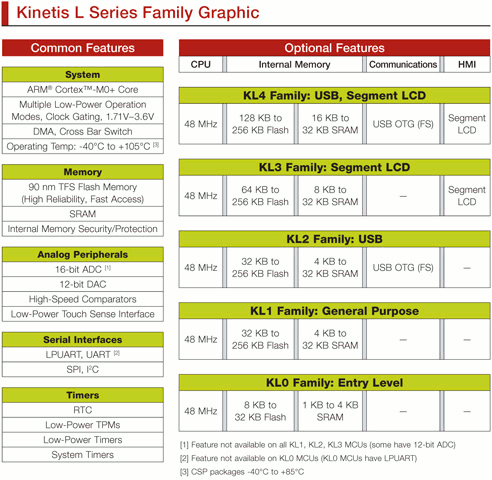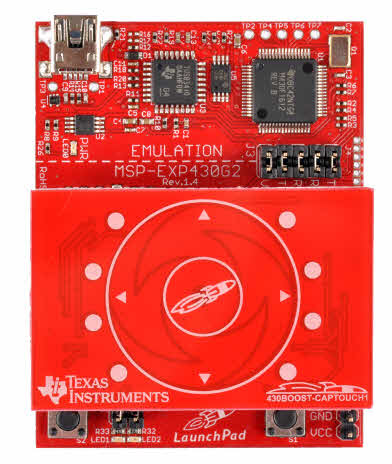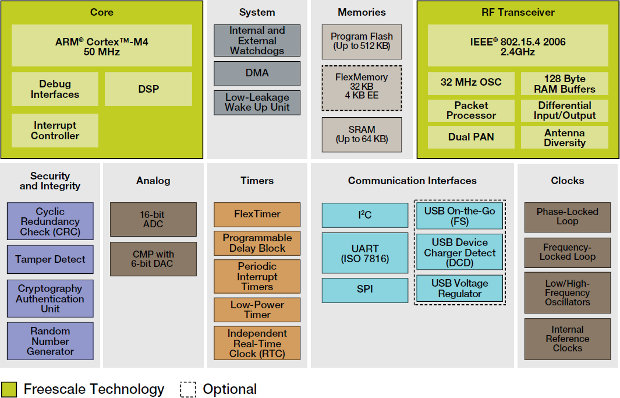Outbreak Galago is a tiny development kit based on a Cortex M3 processor that fits a debugger, and is destined for rapid electronics prototyping. The company promotes it as some sort of Arduino board on steroid (MCU wise) and sells for $25 on kickstarter, and less than $10 in 10k quantities. Here are the board specifications: 72 MHz 32-bit ARM CPU with 32KB of flash ROM and 8KB of RAM (NXP LPC1313 TBC) Integrated hardware debugger One high-speed SPI port, up to 36 Mbps One high-speed I2C port, up to 1.5 Mbps One UART/USART with hardware flow-control capability, up to 256 kbps 10 high-speed PWM pins, 6 driven by 32-bit (high-resolution) timers 6 ADC (analog) input pins with 10-bit resolution at over 400 KSa/sec 25 GPIO (digital) input/output pins The form factor and built-in debugger (via USB) are not really new, as those are already featured in devkit such as TI Piccolo controlSTICK, […]
Discounted and Free Development Kits by Future Electronics and Texas Instruments
If you have a project in mind, Future Electronics and Texas Instruments are currently offering free development boards and 50% discounts on selected development kits respectively. Future Electronics Boards4Free Initiative In August, Future Electronics will be giving away 5 boards every Wednesday (20 boards in total). Here’s how it works: Every Wednesday at 12 pm EST from August 1 to August 22 Future Electronics will post a board on their Twitter, Facebook and Google+ feeds. Reply to them on Twitter, comment on their post on Facebook or comment on their post on Google+ with your project idea to enter into the contest. Each action counts as on entry, so you can get up to 3 entries Each weekly drawing period begins at 12 pm EST and ends at 12:30 pm EST. (So you’ve just got 30 minutes to enter, unless I missed something) Future Electronics will draw 5 winners and […]
16 Euros Arduino Leonardo Board is Now Available
Arduino Leonardo is a new Arduino board with a 16 MHz Atmega32U4, 2.5KB RAM, 32 KB of Flash memory, 20 digital I/O, 12 analog inputs and 7 PWM outputs. In this version the MCU takes care of USB communication with the host, whereas for Arduino Uno, a separate chip is required to take care of this, which makes Arduino Leonardo cheaper than Uno. Here’s a summary of Arduino Leonardo specifications: Microcontroller – Atmel ATmega32u4 @ 16 MHz SRAM – 2.5 KB onchip (ATmega32u4) Flash Memory – 32 KB onchip (ATmega32u4) of which 4 KB used by bootloader EEPROM – 1 KB onchip (ATmega32u4) Operating Voltage – 5V Input Voltage – (recommended) 7-12V | (limits) 6-20V Digital I/O – 20 pins PWM – 7 channels Analog Input – 12 channels DC Current per I/O Pin – 40 mA DC Current for 3.3V Pin – 50 mA Watch the video to get […]
ARM TechCon 2012: Software & System Design Schedule
ARM Technology Conference (TechCon) 2012 will take place on October 30 – November 1, 2011, in Santa Clara, and UBM Electronics has already posted the detailed schedule for the event. The first day (October 30) will be Chip Designs day and the other 2 days will focus on Software & System Design. Even if, like me, you are not be able to go there, it’s still interesting to know what will be discussed at the conference, to have a better idea where ARM is going, and what new technologies and/or development techniques are (or will become) available. There will be around 70 sessions categorized in 15 tracks: Android / Open Source – Development tools, middleware for native application development, and optimized drivers for Android, Linux, FreeRTOS etc … Compute Platforms – Development and implementation of standards and specifications, from board/module design to consumer and server designs Developing / Debugging – […]
Motomic Butterfly Media Grid Renders Pictures and Videos on Freescale Kinetis K70 Cortex-M4 MCU
Motomic has officially announced Butterfly Media Grid, the first media player for Cortex M4 micro-controllers. The software currently runs on Freescale MQX Real-Time Operating System, and can display pictures and logos, as well as play videos on micro-controllers such as the Freescale Kinetis K70 MCU. Here are Media Grid key features: Display images, logos and videos Configure from full screen to grids up to 10×10 Rotate content Configure to optimize performance Display at resolutions up to HD Update over a network. Media Grid is available as a standalone application, and an SDK is also provided in order to embed the technology in custom applications using C, C++ or Qt interfaces. Since the media can be updated over the network, Media Grid is actually similar to a simple digital signage player for low end hardware. Motomic showcased the Media Grid at Design West, in March 2012, and only recently uploaded a […]
Freescale Announces Availability of Kinetis L Series Cortex M0+ MCU and Freedom Devkit
ARM unveiled its ultra-low power Cortex-M0+ core back in March, and Freescale and NXP also announced their plans to use this new core in some of their micro-controllers destined to power the internet of things. Yesterday at Freescale Technology Forum (FTF), Freescale announced the availability of alpha samples of its Kinetis L series. This new low power MCU family will allow existing 8-bit and 16-bit architecture to be replaced by 32-bit architecture without increasing power consumption, cost or size, and the company expects them to be used in devices such as small appliances, gaming accessories, portable medical systems, audio systems, smart meters, lighting and power control. The ARM Cortex-M0+ processor is said to consume about a third of the energy of any 8- or 16-bit processor, while delivering between two to 40 times more performance. Kinetis L series MCU can consume as low as 50 uA/MHz in very-low-power run (VLPR) […]
Texas Instruments Launchpad MSP-EXP430G2 & Capacitive Touch Booster
This is a guest post about the low cost Launchpad MCU devkit. This kit was unveiled in 2010, but since I’d never written about this $4.30 development kit previously, I’ve accepted to publish the post below with slight modifications and amendments. You may be itching to get started with a micro-controller based project but held back because of the high cost of the development boards, and the complex nature of tools required. The good news is that Texas Instruments have come up with a development kit – including a board and the required development software tools. This tool is intended for beginners as well as experienced users. In fact, at under $5, the Texas Instruments’ LaunchPad gives you a complete environment in which you can get started with your projects. This LaunchPad Development Kit is a part of the Texas Instruments MSP430 Value Line series of micro-controllers. You can program, […]
Freescale Announces Kinetis KW20 Cortex M4 MCU with Built-in Zigbee Transceiver
Freescale announced the addition of the Kinetis KW20 to its Kinetis microcontroller portfolio. The Kinetis KW20 is based on ARMCortex-M4 core and MC13242 RF transceiver to deliver a single chip Zigbee solution for the Internet of Things and power applications such as smart energy, smart metering and building control. The company explains that their new wireless MCU family aims to “address the increased processing and memory requirements associated with future ZigBee Smart Energy 2.0 and Internet Protocol specifications”. The KW20 supports dual personal area network (PAN) to enable a single device to communicate wirelessly on two ZigBee networks. This feature eliminates the need for multiple radios required to connect different home automation and smart energy networks. Kinetis KW20 wireless MCU features: ARM Cortex-M4 processor core Up to 512 KB of flash memory and 64 KB of RAM Cryptology accelerator and sophisticated tamper detect Integrated IEEE 802.15.4-compliant radio (MC13242 RF transceiver) Low […]


